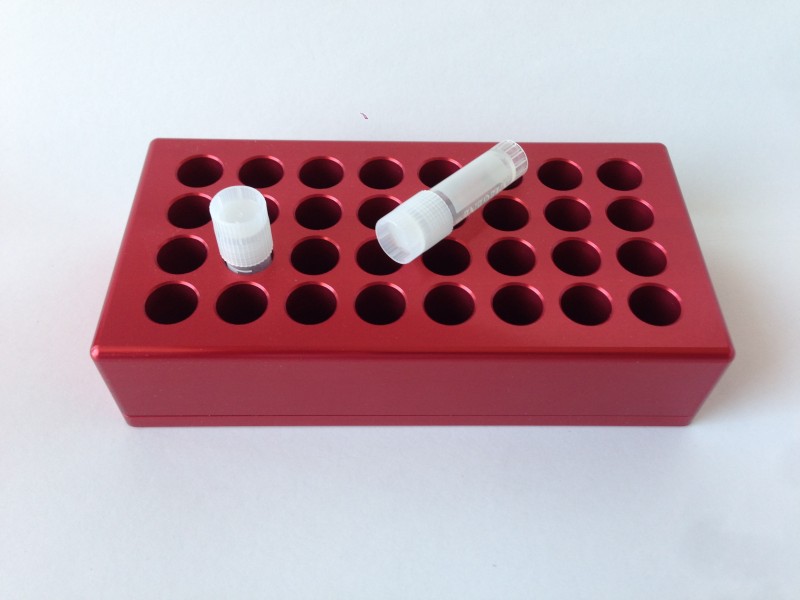Freezing cells is very commonly done for various reasons. Freeing away large numbers of cells in aliquots for future use. Genetically engineered clones or high protein expression cells for future expansion. Or primary cells with specific characteristics at low passage number to be used for future needs. We used to freeze human primary endothelial cells with good response to VEGF growth factor for migration assays. Depend where the source is, these cells respond differently to VEGF. Once we isolate a large pool of cells with good response to VEGF we freeze them for future needs. Here are some tips for freezing cells more efficiently, faster and to increase viability when thawed.
It is better to freeze cells when they are in the growth phase or when cells are growing rapidly. You can plate the adherent cells in a petridish or in T 75 flask and add fresh medium the day before you freeze the cells. Cells should be close to confluent, covering most of the surface. At this stage they are growing rapidly and with fresh supply of medium, they are happy and healthy. If you are freezing suspension cells make sure they are also in the growth phase before you freeze them.
Trypsinize the cells if needed and centrifuge them to a pellet. Remove the medium or PBS and re-suspend the cells in DMEM with 20% fetal calf serum. When you re-suspend the cells, gently pipette up and down without agitating the cells too much. The goal is to break up and cell clumps and make it into a single cell suspension as much as possible.
Re-suspend the cells in half the volume you want. I usually count the cells using a hemocytometer to get total cell number. Usually the cells are divided so that each vial will have 1 million cells. If you need to freeze more cells or less than 1 million / vial, it is up to you. Mix the cell suspension in half the desired final volume. Keep the cells on ice.
Next make up DMEM containing 20 % fetal calf serum and 20% DMSO. Gently add this to the cell suspension still kept on ice. Add slowly not to agitate the cells too much. Adding DMSO to the mixture causes an exothermic (heat generating) reaction, which can be harmful to the cells. It is important the cell suspension is kept cool on ice while adding DMSO mixture. The final cell suspension will be in DMEM containing 20% fetal calf serum, and 10 % DMSO. Keep the cells on ice for 30mins.
Label 2ml cryovials (freezing vials) with the details such as cell type, number, medium and passage number if the cells are primary. Keep this labeled cryovials in a chilled cryovial cool chamber or cryovial cool stand (MCCVL)placed on ice. These are specially made solid metal tube rack with a notch machined at the bottom of the tube hole. This will allow operating the tube with single hand, while the other hand is holding the pipette with cells. This makes the process easier and efficient and saves time during the critical period when the cells are in contact with the exothermic DMSO cell culture mixture.
Unscrew the cap of cryovial with one hand while on the other hand hold a pipette, gently mix the cell suspension and pick up the cell suspension in the pipette. Because of the notch on the bottom of tube hole, when rotating the tube to unscrew, the vial will stop rotating. In order for this to work you need cryovials with notch on the bottom. These are available from major manufacturers. Aliquot 1 ml of cell suspension into each cryovials. Screw the cap back on tightly with one hand. This can be done with the cryovial cool block. Put the vials in a labeled box and keep it in the -700C freezer overnight for the slow cooling. Next day put the box in the liquid nitrogen tank.

